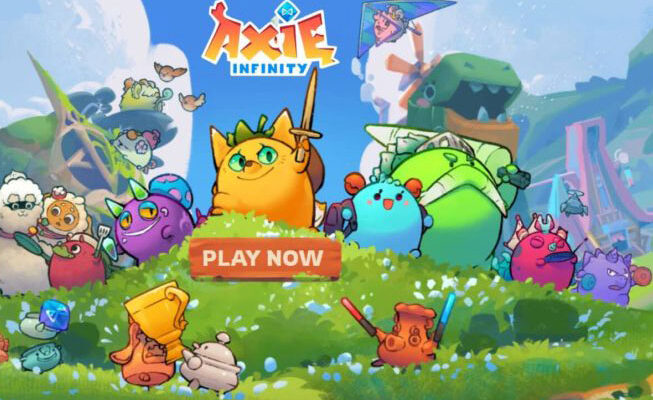The gaming industry has undergone a significant transformation with the rise of blockchain technology and cryptocurrency integration. One of the most revolutionary concepts to emerge from this convergence is Play-to-Earn (P2E) crypto games. These games allow players to earn real-world value through in-game activities, turning gaming from a mere pastime into a legitimate source of income. As blockchain technology matures, P2E games are becoming a cornerstone of the digital economy.
In this comprehensive guide, we will explore what Play-to-Earn crypto games are, how they work, their benefits and challenges, and a list of some of the best P2E games currently available.
What Are Play-to-Earn Crypto Games?
Play-to-Earn (P2E) crypto games are blockchain-based games that reward players with cryptocurrency or digital assets, such as Non-Fungible Tokens (NFTs), that hold real-world value. Unlike traditional video games, where in-game rewards hold no monetary worth outside the game, P2E games allow players to trade, sell, or use their assets in other ecosystems.
The key features of Play-to-Earn games include:
- Blockchain-based Ownership: Players have full control over their digital assets, thanks to decentralized technology.
- Crypto Rewards: Players earn native tokens or cryptocurrencies through gameplay, which can be converted into real money.
- NFTs Integration: In-game items, characters, or land can be minted as NFTs, making them tradable in open marketplaces.
- Smart Contracts: Automated, secure transactions via blockchain smart contracts ensure transparency and fair play.
How Do Play-to-Earn Crypto Games Work?
P2E games function on blockchain networks such as Ethereum, Binance Smart Chain, and Solana. These games utilize smart contracts and decentralized finance (DeFi) mechanisms to facilitate in-game transactions. Here’s a breakdown of how they work:
1. Earning Rewards
- Players participate in various in-game activities like battles, quests, farming, or trading.
- Successful completion of tasks or missions earns the player crypto tokens or NFTs.
2. Ownership of In-Game Assets
- Unlike traditional games where the developer owns in-game assets, P2E games offer full ownership to players via NFTs.
- Players can buy, sell, or trade these assets in decentralized marketplaces.
3. Trading and Monetization
- Tokens earned in-game can be traded on cryptocurrency exchanges.
- NFTs can be sold in NFT marketplaces for profit.
- Some games allow staking mechanisms, where players lock their tokens to earn passive rewards.
Benefits of Play-to-Earn Crypto Games
P2E games offer numerous advantages for both gamers and developers:
1. Financial Opportunities
- Players can earn real income by playing games, making gaming a viable profession.
- In some countries, P2E games have become a primary income source for many individuals.
2. True Digital Ownership
- Gamers own in-game assets as NFTs, eliminating the risk of losing them due to bans or account deletions.
3. Decentralization and Transparency
- Blockchain technology ensures fair play, preventing fraud and manipulation.
- Smart contracts automate transactions, ensuring security and transparency.
4. Integration with the Metaverse
- Many P2E games are building towards a larger metaverse, allowing players to use assets across multiple platforms.
5. Community-Driven Development
- Many P2E games are governed by Decentralized Autonomous Organizations (DAOs), allowing players to participate in decision-making.
Challenges and Risks in Play-to-Earn Games
Despite their promising potential, P2E games face several challenges:
1. Scalability Issues
- Many blockchain networks struggle with high gas fees and slow transaction speeds.
- Layer-2 solutions and alternative blockchains like Solana are helping address these issues.
2. Regulatory Concerns
- Governments are still figuring out how to regulate blockchain gaming and taxation.
- Some countries have imposed restrictions on crypto-related gaming.
3. Volatility in Crypto Markets
- The value of in-game tokens can fluctuate significantly, impacting the earnings of players.
4. High Initial Investment
- Some P2E games require an initial purchase of NFTs, which can be costly.
- Scholarship models and free-to-play options are emerging to counteract this barrier.
5. Security Threats
- Hacks and scams in the crypto space pose risks to players’ assets.
- Players must exercise caution and use secure wallets.
Best Play-to-Earn Crypto Games in 2025
Here are some of the top P2E games in 2025:
1. Axie Infinity
- One of the pioneers of P2E gaming.
- Players collect, breed, and battle creatures called Axies.
- Rewards in $SLP and $AXS tokens.
2. Decentraland
- A virtual world where players can buy, sell, and develop digital land.
- Uses $MANA token for transactions.
3. The Sandbox
- A decentralized metaverse where users create and monetize experiences.
- Uses $SAND token.
4. Gods Unchained
- A trading card game where players truly own their cards.
- Earns players $GODS token.
5. Star Atlas
- A space exploration and combat game set in a futuristic universe.
- Built on the Solana blockchain.
6. Illuvium
- A visually stunning RPG where players capture and battle creatures.
- Uses $ILV token for rewards.
7. Big Time
- A multiplayer action RPG with a time-traveling theme.
- Offers NFT-based rewards and monetization options.
The Future of Play-to-Earn Gaming
The P2E gaming landscape is continuously evolving, with the following trends shaping its future:
1. Integration with Artificial Intelligence (AI)
- AI-powered NPCs and smarter gameplay mechanics.
2. Mass Adoption by Traditional Game Studios
- Major gaming companies are entering the blockchain gaming space.
3. Hybrid Free-to-Play & Play-to-Earn Models
- Lowering the entry barrier by offering free-to-play options.
4. Improved Tokenomics and Sustainability
- Game developers are focusing on long-term sustainability of tokenomics.
5. Cross-Platform and Interoperable Metaverse Games
- Players will be able to transfer assets between different P2E games and metaverse platforms.
Conclusion
Play-to-Earn crypto games are reshaping the gaming industry and creating new opportunities for players worldwide. While challenges exist, the potential for financial growth, digital ownership, and decentralized governance makes P2E gaming a promising frontier. As technology advances, we can expect more innovative, sustainable, and engaging P2E experiences that bridge the gap between virtual and real-world economies.
If you’re interested in getting started, research games carefully, manage risks wisely, and explore the evolving blockchain gaming landscape. The future of gaming is here, and it’s Play-to-Earn!




